Abstract
Pigeons' responses were maintained under multiple schedules to study properties of briefly presented stimuli. Responses in one component produced food according to a second-order schedule with fixed-interval components in which food or a brief stimulus occurred with equal probability. In the second component responses produced only the brief stimulus under a fixed-ratio schedule. Under various conditions the brief stimulus in the first component was (a) paired with food, (b) not paired with food, (c) partially omitted, or (d) scheduled simultaneously with the second-order schedule under an independent variable-interval schedule. Paired and nonpaired brief stimuli maintained similar response patterning in the second-order schedule. However, only paired stimuli maintained responses in the second component. The data suggest that nonpaired brief stimuli engender response patterning in second-order schedules as a result of their discriminative properties. When the stimulus is paired with food, these discriminative properties sometime mask a reinforcement effect, and no change in response patterning is observed. When the discriminative properties of the brief stimulus are absent, the reinforcing effects of pairing the brief stimulus with food may be observed.
Full text
PDF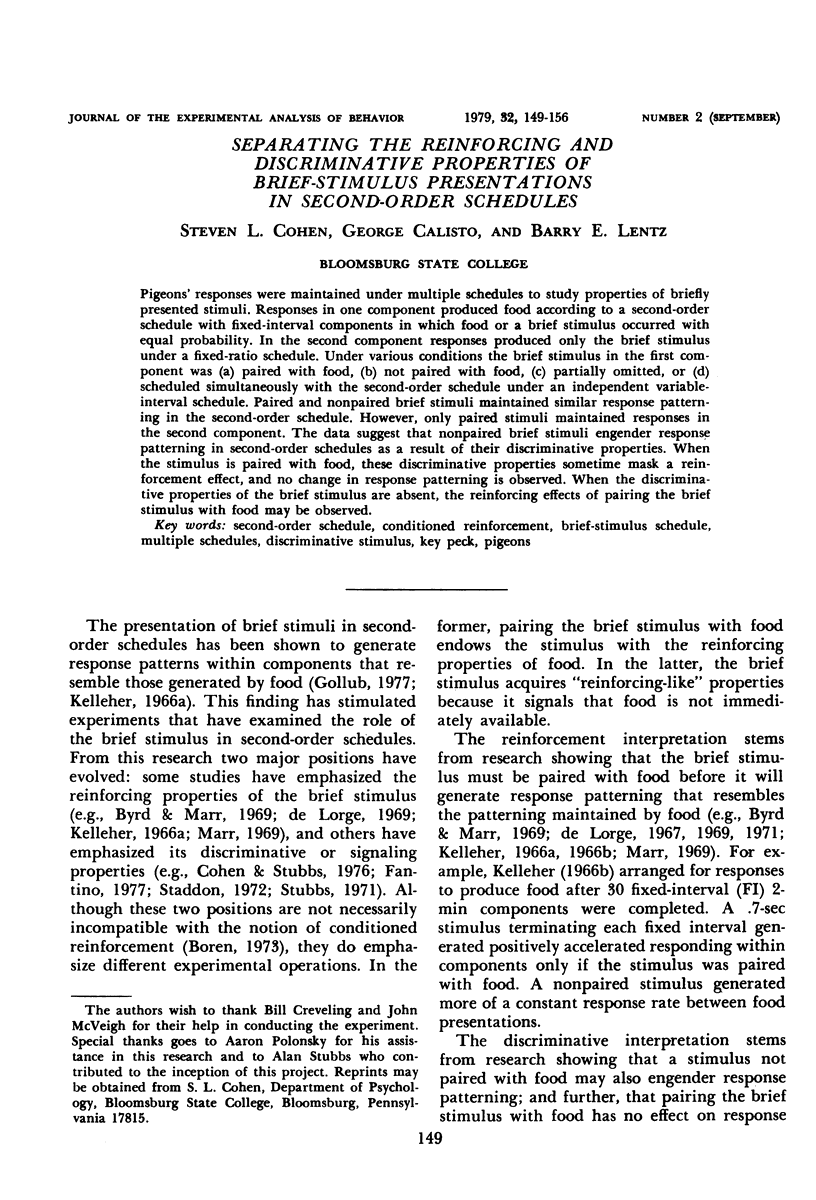

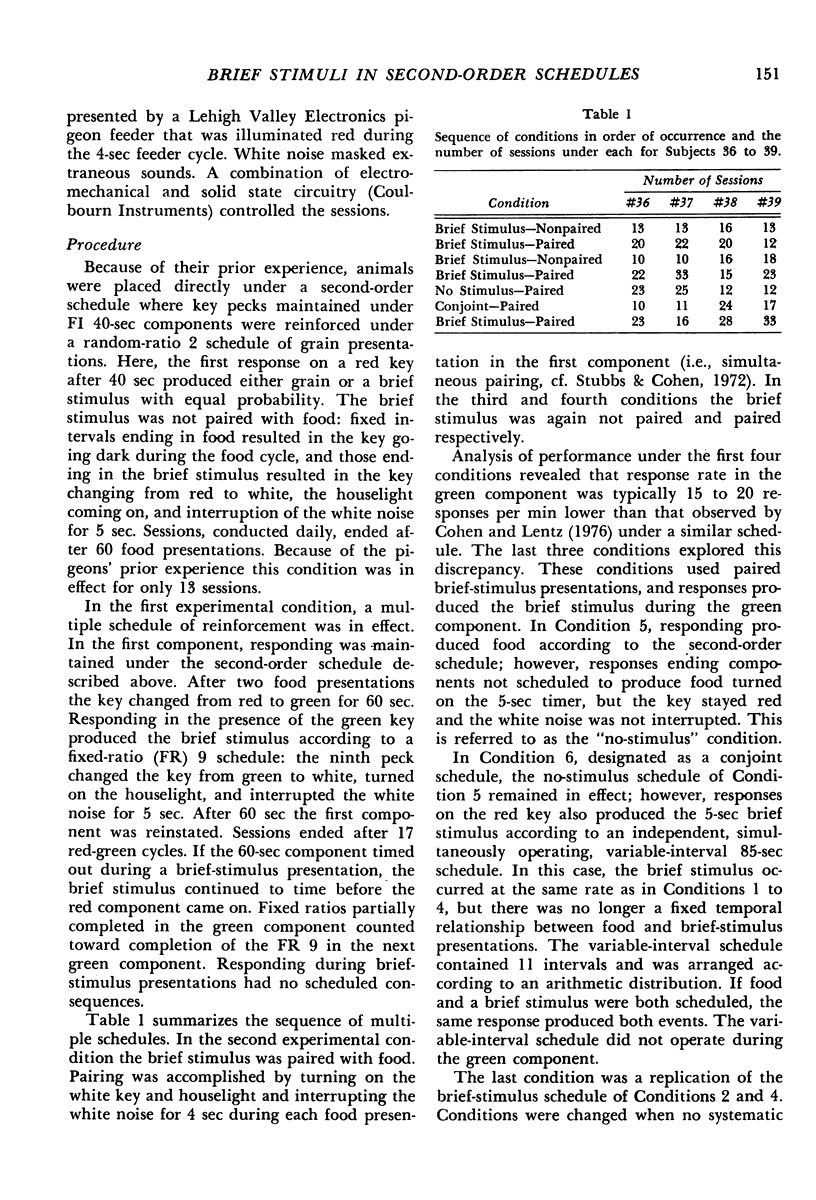
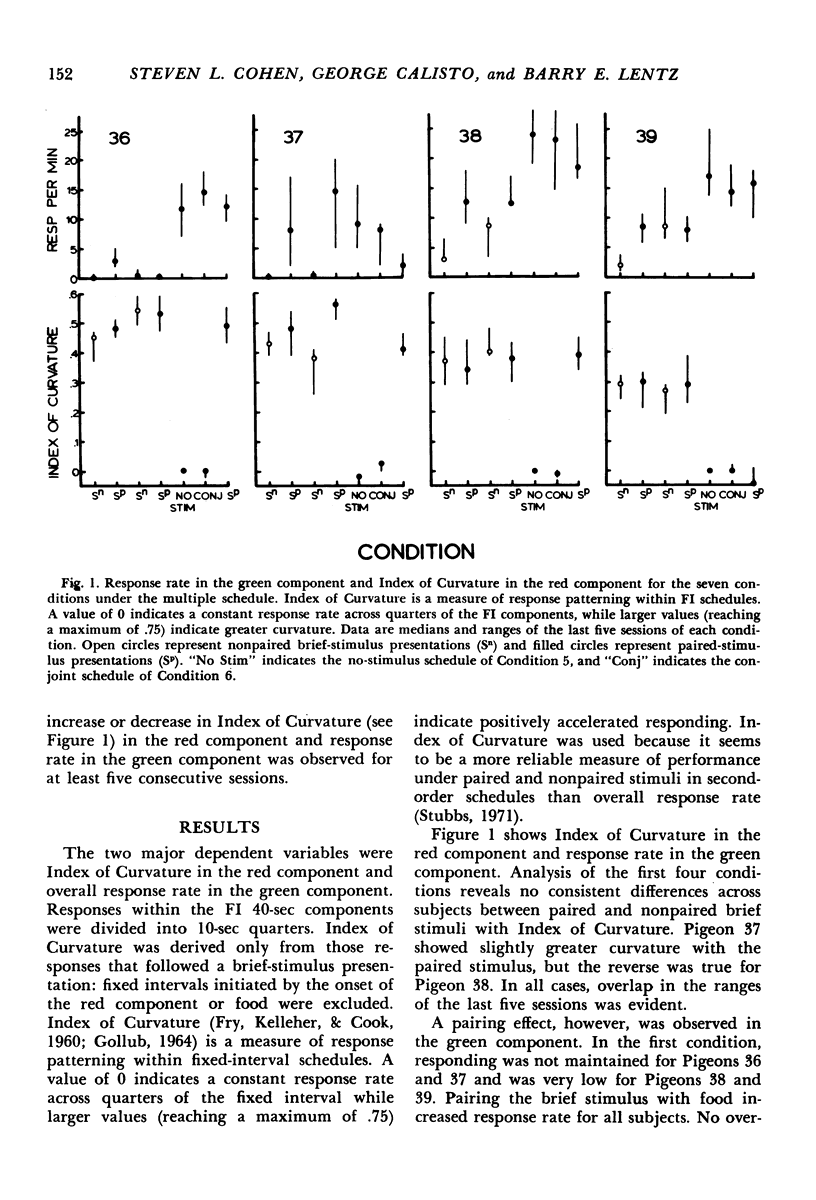
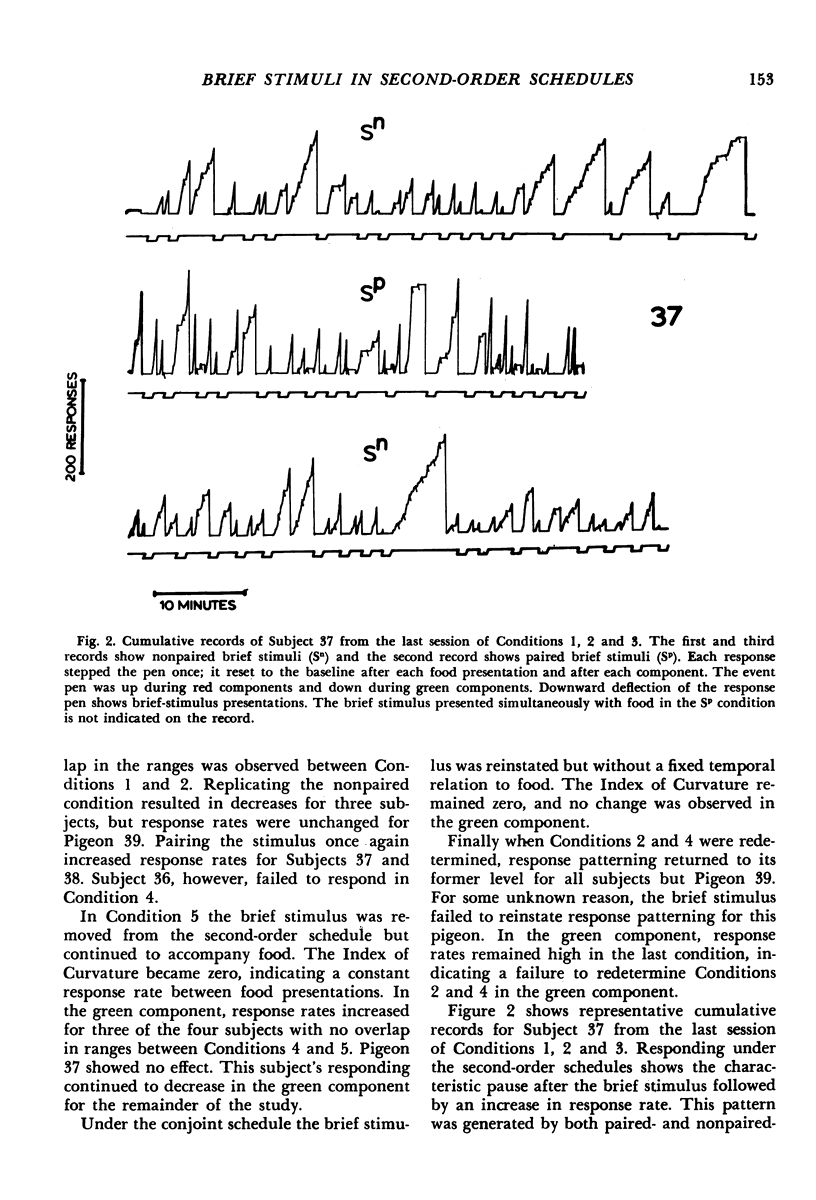
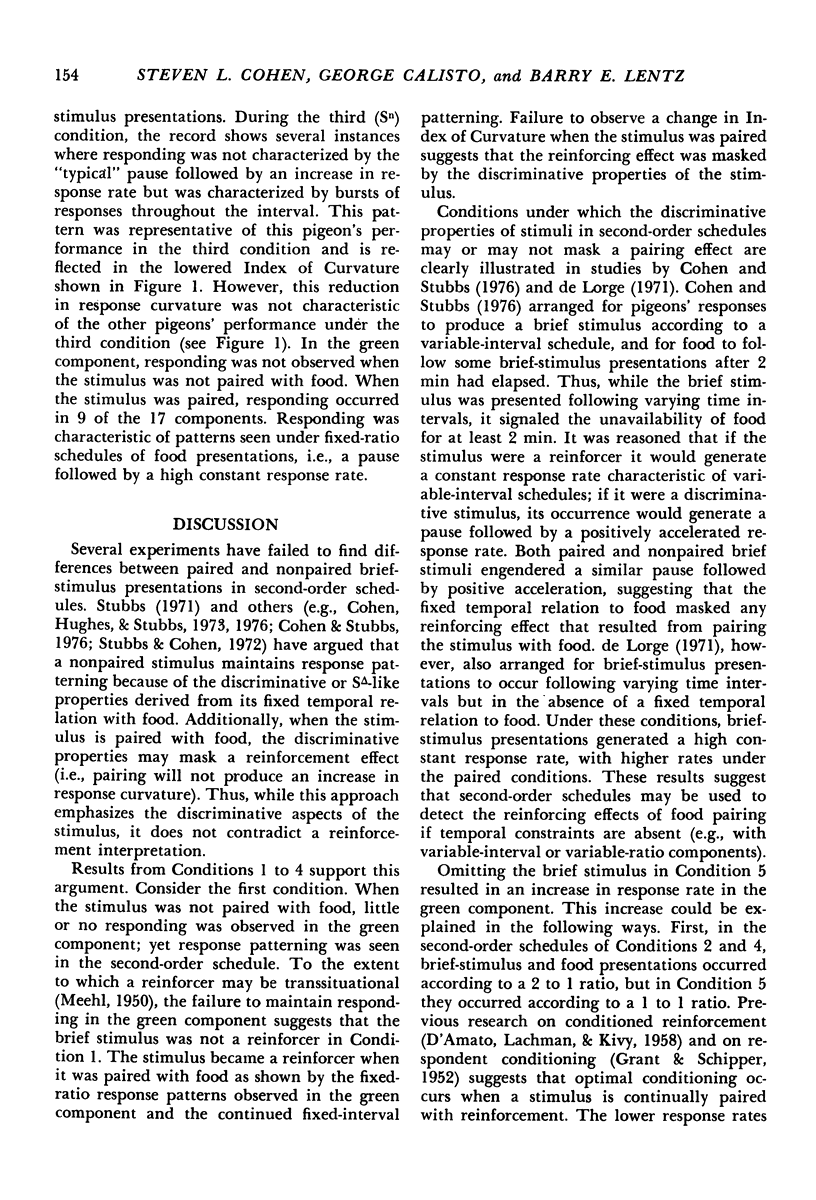
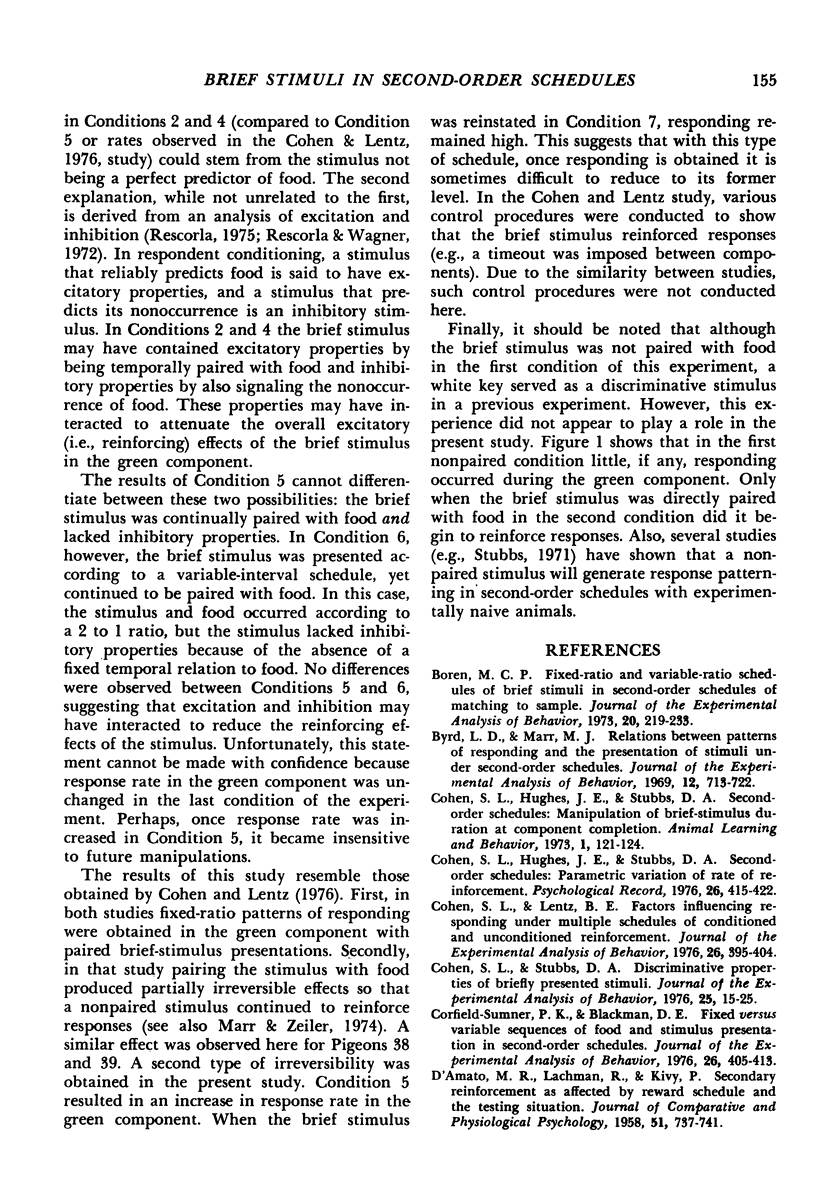
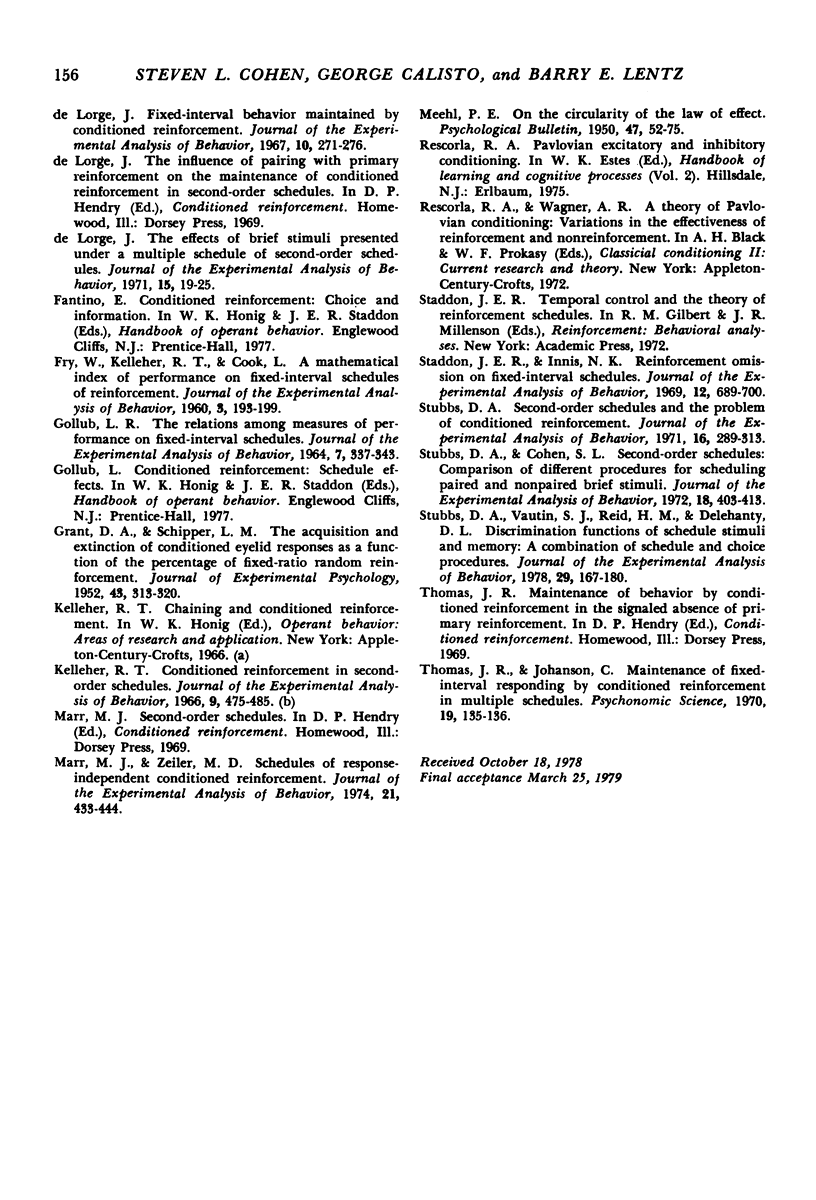
Selected References
These references are in PubMed. This may not be the complete list of references from this article.
- Boren M. C. Fixed-ratio and variable-ratio schedules of brief stimuli in second-order schedules of matching to sample. J Exp Anal Behav. 1973 Sep;20(2):219–233. doi: 10.1901/jeab.1973.20-219. [DOI] [PMC free article] [PubMed] [Google Scholar]
- Byrd L. D., Marr M. J. Relations between patterns of responding and the presentation of stimuli under second-order schedules. J Exp Anal Behav. 1969 Sep;12(5):713–722. doi: 10.1901/jeab.1969.12-713. [DOI] [PMC free article] [PubMed] [Google Scholar]
- Cohen S. L., Lentz B. E. Factors influencing responding under multiple schedules of conditioned and unconditioned reinforcement. J Exp Anal Behav. 1976 Nov;26(3):395–404. doi: 10.1901/jeab.1976.26-395. [DOI] [PMC free article] [PubMed] [Google Scholar]
- Cohen S. L., Stubbs D. A. Discriminative properties of briefly presented stimuli. J Exp Anal Behav. 1976 Jan;25(1):15–25. doi: 10.1901/jeab.1976.25-15. [DOI] [PMC free article] [PubMed] [Google Scholar]
- Corfield-Sumner P. K., Blackman D. E. Fixed versus variable sequences of food and stimulus presentation in second-order schedules. J Exp Anal Behav. 1976 Nov;26(3):405–413. doi: 10.1901/jeab.1976.26-405. [DOI] [PMC free article] [PubMed] [Google Scholar]
- D'AMATO M. R., LACHMAN R., KIVY P. Secondary reinforcement as affected by reward schedule and the testing situation. J Comp Physiol Psychol. 1958 Dec;51(6):737–741. doi: 10.1037/h0038446. [DOI] [PubMed] [Google Scholar]
- De Lorge J. Fixed-interval behavior maintained by conditioned reinforcement. J Exp Anal Behav. 1967 May;10(3):271–276. doi: 10.1901/jeab.1967.10-271. [DOI] [PMC free article] [PubMed] [Google Scholar]
- De Lorge J. The effects of brief stimuli presented under a multiple schedule of second-order schedules. J Exp Anal Behav. 1971 Jan;15(1):19–25. doi: 10.1901/jeab.1971.15-19. [DOI] [PMC free article] [PubMed] [Google Scholar]
- FRY W., KELLEHER R. T., COOK L. A mathematical index of performance on fixed-interval schedules of reinforcement. J Exp Anal Behav. 1960 Jul;3:193–199. doi: 10.1901/jeab.1960.3-193. [DOI] [PMC free article] [PubMed] [Google Scholar]
- GOLLUB L. R. THE RELATIONS AMONG MEASURES OF PERFORMANCE ON FIXED-INTERVAL SCHEDULES. J Exp Anal Behav. 1964 Sep;7:337–343. doi: 10.1901/jeab.1964.7-337. [DOI] [PMC free article] [PubMed] [Google Scholar]
- GRANT D. A., SCHIPPER L. M. The acquisition and extinction of conditioned eyelid responses as a function of the percentage of fixed ratio random reinforcement. J Exp Psychol. 1952 Apr;43(4):313–320. doi: 10.1037/h0057186. [DOI] [PubMed] [Google Scholar]
- Marr M. J., Zeiler M. D. Schedules of response-independent conditioned reinforcement. J Exp Anal Behav. 1974 May;21(3):433–444. doi: 10.1901/jeab.1974.21-433. [DOI] [PMC free article] [PubMed] [Google Scholar]
- Staddon J. E., Innis N. K. Reinforcement omission on fixed-interval schedules. J Exp Anal Behav. 1969 Sep;12(5):689–700. doi: 10.1901/jeab.1969.12-689. [DOI] [PMC free article] [PubMed] [Google Scholar]
- Stubbs D. A., Cohen S. L. Second-order schedules: comparison of different procedures for scheduling paired and nonpaired brief stimuli. J Exp Anal Behav. 1972 Nov;18(3):403–413. doi: 10.1901/jeab.1972.18-403. [DOI] [PMC free article] [PubMed] [Google Scholar]
- Stubbs D. A. Second-order schedules and the problem of conditioned reinforcement. J Exp Anal Behav. 1971 Nov;16(3):289–313. doi: 10.1901/jeab.1971.16-289. [DOI] [PMC free article] [PubMed] [Google Scholar]
- Stubbs D. A., Vautin S. J., Reid H. M., Delehanty D. L. Discriminative functions of schedule stimuli and memory: a combination of schedule and choice procedures. J Exp Anal Behav. 1978 Mar;29(2):167–180. doi: 10.1901/jeab.1978.29-167. [DOI] [PMC free article] [PubMed] [Google Scholar]


